India Coins And Notes


Famous Discoveries
August 25, 2020

Indian Film Personalities
August 27, 2020For a common person, money simply means notes and coins. This is so because in India, the payment system, which includes credit cards and electronic cash, still revolves mainly around notes and coins, especially for retail transactions.
What is the Indian currency called?
- The Indian currency is called the Indian Rupee (INR) and the coins are called paise.One Rupee consists of 100 paise.
- The symbol of the Indian Rupee is “₹”. The design resembles both the Devanagari letter “₹” (ra) and the Latin capital letter “R”, with a double horizontal line at the top.
Currency Basics:
1. Coins-
- Coins in India are presently being issued in denominations of one rupee, two rupees, five rupees and ten rupees.
- Coins in the denomination of 1 Paise, 2 Paise, 3 Paise, 5 Paise, 10 Paise, 20 Paise and 25 Paise have been withdrawn from circulation with effect from June 30, 2011 and are, therefore, no more legal tender.
2. Notes-
- Banknotes in India are currently being issued in the denomination of Rs 10, Rs 20, Rs 50, Rs 100, Rs 200, Rs 500 and Rs 2000.
- These notes are called banknotes as they are issued by the Reserve Bank of India.
- Government of India vide their Notification no. 2652 dated November 8, 2016 have withdrawn the Legal Tender status of Rs 500 and Rs 1,000 denominations of banknotes of the Mahatma Gandhi Series issued by the Reserve Bank of India till November 8, 2016.
- Currency paper is composed of cotton and cotton rag.
Let’s see some of rupees and coins:
| Indian Currency | Features |
|---|---|
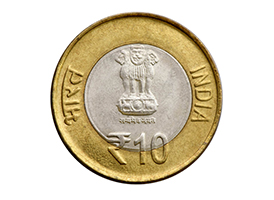  |
Metal: Center: Copper Nickel Ring: Aluminum Bronze Weight: 7.7 gms Diameter: 27 mm Shape: Circular |
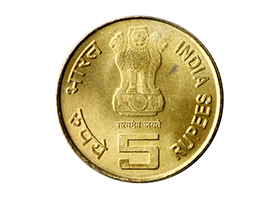  |
Metal: Nickel Brass Weight: 6.00 gms Diameter: 27 mm Shape: Circular |
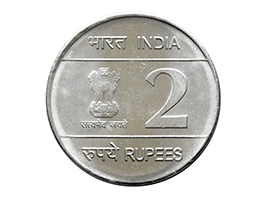  |
Metal: Stainless Steel Weight: 6 gms Diameter: 25 mm Shape: Circular |
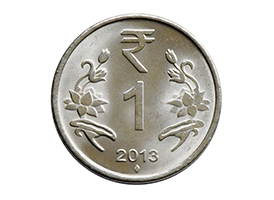  |
Metal: Ferritic Stainless Steel Weight: 3.8 g, 4.8 g Diameter: 25mm, 21.93mm Shape: Circular |
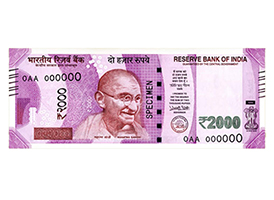  |
Dimensions: 166 mm × 66 mm Main color: Magenta Watermark: Mahatma Gandhi Reverse side image: Mangalyaan |
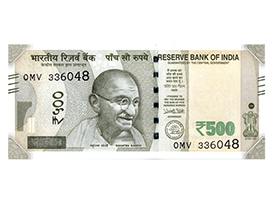  |
Dimensions: 150 mm × 66 mm Main color: Stone grey Watermark: Mahatma Gandhi Reverse side image: Red Fort |
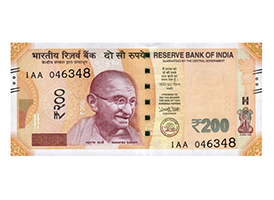  |
Dimensions: 146 mm × 66 mm Main color: Bright yellow Watermark: Mahatma Gandhi Reverse side image: Sanchi Stupa |
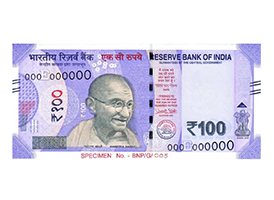  |
Dimensions: 142 mm × 66 mm Main color: Lavender Watermark: Mahatma Gandhi Reverse side image: Rani Ki Vav |
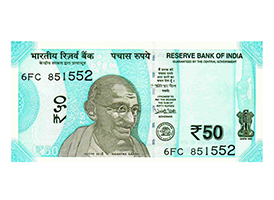  |
Dimensions: 135 mm × 66 mm Main color: Fluorescent blue Watermark: Mahatma Gandhi Reverse side image: Hampi with Chariot |
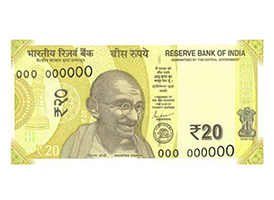  |
Dimensions: 129 mm × 63 mm Main color: Greenish yellow Watermark: Mahatma Gandhi Reverse side image: Ellora Caves |
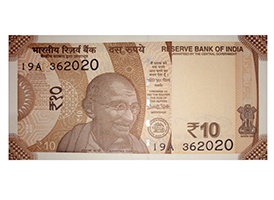  |
Dimensions: 123 mm × 63 mm Main color: Chocolate brown Watermark: Mahatma Gandhi Reverse side image: Konark Sun Temple |
What is the role of Government of India?
- In terms of Section 25 of RBI Act, 1934 the design of banknotes is required to be approved by the Central Government on the recommendations of the Central Board of the Reserve Bank of India.
- The Government of India is also responsible for the designing and minting of coins in various denominations.
What is the role of the Reserve Bank of India in currency management?
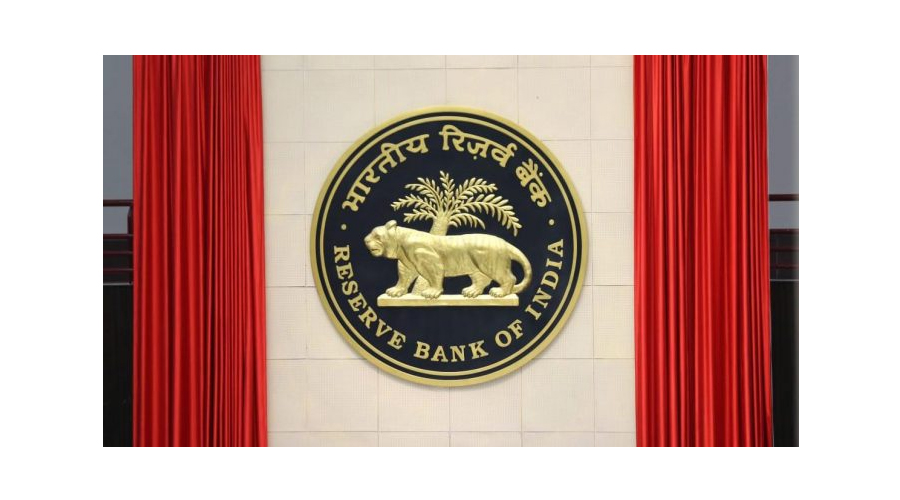

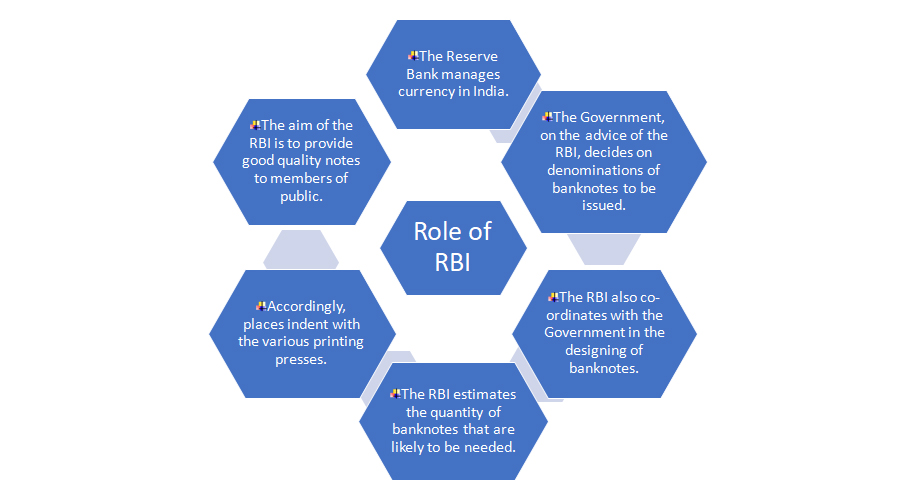

Interesting Facts:
- The rupee is known by different names depending on the area of the country: we can hear people calling it upaya, ropey, rubai or ropa.
- Large amounts in rupees are counted in hundreds of thousands, and are called lakhs, crores and Arabs.
- After independence, Pakistani initially used Indian currency. They simply stamped the Indian currency with the label “Government of Pakistan” for using it exclusively in Pakistan. In 1948, Pakistan started printing its own currency.
- The current series of the banknotes which is used in Indian Currency is known as the Mahatma Gandhi series. It was introduced in 1996.
- Bhartiya Reserve Bank Note Mudran Private Limited (BRBNMPL), an RBI subsidiary, is also responsible for printing the currency notes.
- There are total 17 languages present on the currency notes. Hindi and English are prominently displayed in the center of the notes.
- 10. The symbol of rupee “₹” was derived from the Devanagari letter “र” (Ra) and the Roman capital letter “R”.
- There is a parallel line drawn in the symbol in order to make it look like the tricolor of the flag of India.
- The highest denomination notes ever printed by the Reserve Bank of India was the ₹ 10000 note in 1938 and again in 1954. These notes were demonetized in 1946 and again in 1978.





